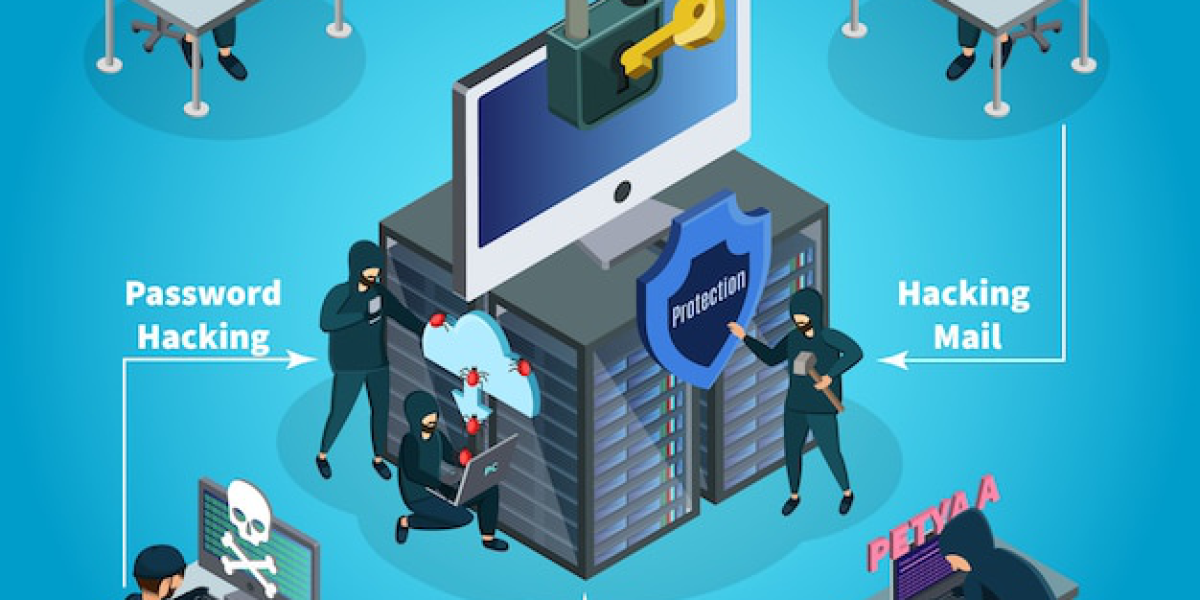In today’s digital landscape, cyber security risk management is no longer an option but a necessity for businesses of all sizes. Cyber threats are evolving rapidly, with attackers employing increasingly sophisticated methods to exploit vulnerabilities. As businesses embrace digital transformation, protecting sensitive data and systems from cyber threats has become crucial for long-term success.
This blog provides essential cyber security risk management strategies to help businesses manage and mitigate risks effectively.
1. Conduct a Comprehensive Risk Assessment
The first step in effective cyber security risk management strategies is conducting a thorough risk assessment. This process involves identifying assets that need protection, such as data, software, and hardware, and understanding potential threats and vulnerabilities. Businesses should assess both internal and external risks, including those posed by employees, third-party vendors, and cybercriminals.
It’s important to rank risks based on their potential impact during a risk assessment. This prioritization enables businesses to allocate resources effectively and focus on protecting their most valuable assets. Regularly updating risk assessments is also critical, as new threats can emerge anytime.
2. Develop a Cyber Security Policy
A robust cyber security policy is a roadmap for protecting a company’s digital assets. This policy should outline employees’ procedures and protocols to maintain security. Key components of an effective cybersecurity policy include:
- Access Controls: Define who has access to sensitive data and systems. Implement a least-privilege model where employees only have access to information necessary for their roles.
- Password Management: Require strong, unique passwords and enforce regular password changes. Implement multi-factor authentication (MFA) for an added layer of security.
- Device and Network Security: Specify guidelines for securing devices and networks, especially when working remotely. This includes installing antivirus software, encrypting data, and using secure Wi-Fi connections.
- Incident Response Plan: Outline procedures for responding to a security breach, including identifying the threat, containing the damage, and reporting the incident.
Training employees on the cyber security policy is essential to ensure compliance. Regular training sessions can help employees understand the latest threats and how to prevent them, strengthening the company’s overall security posture.
3. Implement Advanced Threat Detection and Monitoring
To effectively manage cyber security risks, businesses must proactively detect and monitor threats. Advanced threat detection tools, such as intrusion detection systems (IDS) and security information and event management (SIEM) systems, can help identify real-time suspicious activity and potential threats.
These tools provide insights into unusual behaviour on the network, such as unauthorized access attempts or data exfiltration. By detecting threats early, businesses can respond quickly to prevent or mitigate the impact of a cyber incident. Regularly updating and fine-tuning these tools ensures they stay effective against the latest threats.
4. Establish Strong Data Backup and Recovery Procedures
Data is one of a business’s most valuable assets, and losing it can be devastating. Implementing strong data backup and recovery procedures is essential for effective cyber security risk management. Backups should be performed regularly and stored securely, ideally in multiple locations, such as both on-premises and in the cloud.
A well-structured data recovery plan is critical in the event of a cyberattack, such as ransomware. Businesses should test their recovery procedures periodically to ensure they can restore data quickly and efficiently. By minimizing downtime and data loss, companies can reduce the impact of cyber incidents on their operations.
5. Partner with a Cyber Security Services Provider
Managing cyber security in-house can be challenging for many businesses due to a lack of expertise or resources. Partnering with a cyber security services provider in Markham, Stouffville, or nearby areas, like Microsys, can provide the specialized skills and tools needed to protect the organization effectively.
As a cyber security provider, Microsys offers various services, including threat monitoring, vulnerability assessments, and incident response. We help businesses stay up-to-date with the latest cyber security trends and regulations, ensuring compliance with industry standards. By outsourcing cyber security to experts, companies can focus on their core operations while maintaining a robust security posture.
6. Educate Employees on Cyber Security Best Practices
Employees are often the first line of defence against cyber threats, making cyber security training a vital component of risk management. Regularly educating employees on cybersecurity best practices empowers them to identify and respond to threats, reducing the risk of human error that could lead to security breaches.
Key topics to cover in training sessions include recognizing phishing emails, safe browsing habits, secure password practices, and the importance of reporting suspicious activity. By fostering a culture of cybersecurity awareness, businesses can strengthen their defences from within.
7. Keep Software and Systems Updated
Outdated software and systems are prime targets for cybercriminals, as they often contain vulnerabilities that attackers can exploit. To reduce the risk of cyber incidents, businesses should implement a regular patch management process to ensure that all software and systems are up to date.
In addition to installing updates, businesses should consider removing any outdated or unsupported software that could pose a security risk. This proactive approach helps close potential entry points for attackers, reducing the likelihood of a successful breach.
8. Utilize Multi-Layered Security Measures
Relying on a single security measure is insufficient in today’s complex threat landscape. Instead, businesses should adopt a multi-layered security approach that combines several defences to create a more comprehensive shield against cyber threats. Examples of layered security measures include:
- Firewalls: Act as a barrier between internal networks and external threats.
- Anti-Malware Software: Detects and removes malicious software, such as viruses and spyware.
- Email Security Tools: Filters out phishing emails and blocks malicious attachments.
- Encryption: Protects sensitive data at rest and in transit from unauthorized access.
By implementing multiple security layers, businesses can increase their resilience against cyber attacks, as attackers would need to bypass several defences to succeed.
9. Regularly Test Cyber Security Measures
Effective cyber security risk management strategies require continuous improvement and proactive testing. Regular testing, such as penetration and vulnerability assessments, can help businesses identify weaknesses in their security defences and take corrective action.
Penetration testing simulates real-world attacks to reveal vulnerabilities, while vulnerability assessments provide a broader overview of potential security gaps. By conducting these tests periodically, businesses can stay one step ahead of cyber threats and improve their ability to respond to incidents.
10. Review and Adapt Cyber Security Strategies
Cyber security is a constantly evolving field, and strategies that work today may not be effective tomorrow. Businesses should regularly review their cyber security strategies to ensure they align with the latest threat landscape and technological advancements. This includes assessing new risks, updating policies, and adopting innovative security solutions when necessary.
By staying adaptable and proactive, businesses can strengthen their cyber security posture and remain resilient in the face of emerging threats.
Recommended Read: Understanding the ROI of Cyber Security Investments
Effective cyber security risk management strategies require a proactive, multi-layered approach that combines technology, policies, and employee education. By implementing these strategies, businesses can reduce their vulnerability to cyber threats and protect their valuable assets. Partnering with a cyber security services provider in Richmond Hill or Ajax can provide additional expertise and resources to safeguard against potential risks.
With the ever-evolving nature of cyber threats, a comprehensive cyber security strategy is not just about managing risks—it’s about fostering a secure environment that supports growth and innovation in the digital age.
Stay Protected with Microsys’s Cyber Security Expertise
In today’s ever-evolving cyber landscape, implementing effective cyber security risk management strategies is essential to protect your business. At Microsys, our expertise in cyber security and our tailored solutions help businesses across Canada, including Markham, Stouffville, Richmond Hill, Ajax, Ottawa, North York, Newmarket, and Aurora, secure their data and mitigate cyber threats.
Whether you need to strengthen your defenses, improve incident response, or adopt a proactive security approach, Microsys’s team of cyber security experts is here to guide you. Contact our cyber security services team today to schedule a consultation and learn how our solutions can support your business’s resilience in a rapidly changing digital world!






